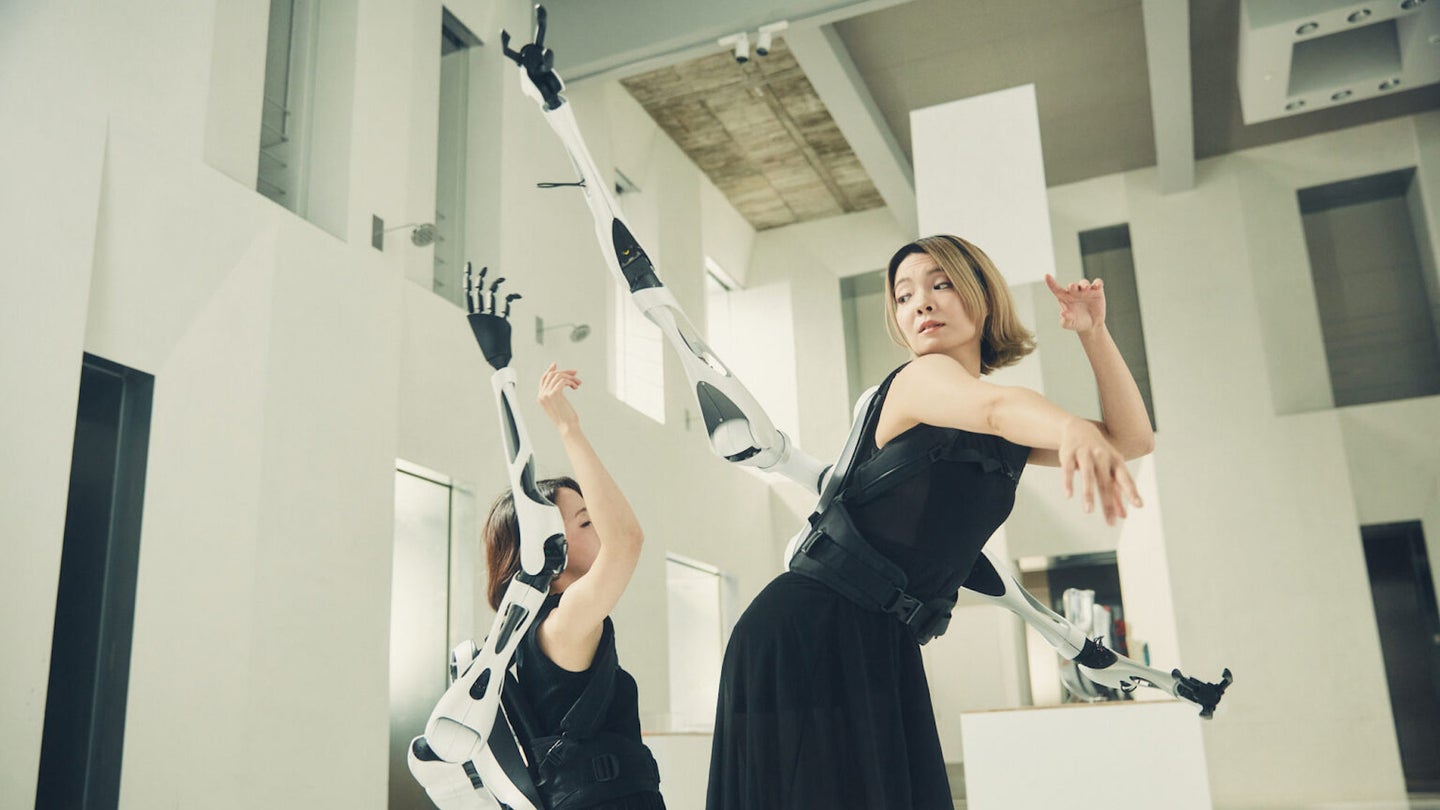
Speculative horror fiction, traditional Japanese puppetry, and cultural concepts of autonomy are inspiring a new project aimed at providing humans with sets of detachable cyborg arms. Jizai Arms are sleek, controllable appendages designed to compliment users’ movements, expression, and artistry. The University of Tokyo team lead by co-creator Masahiko Inami presented their creation for the first time last month at the 2023 CHI Conference on Human Factors in Computing Systems.
Unlike the headline-grabbing worlds of AI and autonomous robot technologies, however, Inami explained to Reuters on Tuesday that Jizai Arms are “absolutely not a rival to human beings.” Instead, the interchangeable limbs are meant to aid users to “do as we please… it supports us and can unlock creativity” in accordance with the Japanese concept of “jizai.” The term roughly translates to autonomy or freedom. According to the presentation’s abstract, the project is also intended to explore myriad possibilities between “digital cyborgs in a cyborg society.”
[Related: The EU just took a huge step towards regulating AI.]
To use Jizai Arms, subjects first strap on a harness to their torso. From there, arms can be attached into back sockets, and are currently controlled by a user or third-party via a miniature model of the same technology.
The project is partially inspired by centuries’ old “Jizai Okimono” animal puppetry, as well as Nobel Prize-winning author Yasunari Kawabata’s magical realism short story, “One Arm.” In this 1964 tale, a woman lets a man borrow her detached arm for an evening. “Half a century since its writing,” reads the paper’s introduction, “emerging human-machine integration technologies have begun to allow us to physically experience Kawabata’s world.”
Videos provided by the project showcase dancers performing choreography alongside classical music while wearing the accessory arms. The team’s paper describes other experiences such as varying the number and designs of the cybernetic arms, swapping appendages between multiple users, and interacting with each other’s extra limbs. In the proof-of-concept video, for example, the two ballet dancers ultimately embrace one another using both their human and artificial arms.
[Related: Cyborg cockroaches could one day scurry to your rescue.]
According to Inami, users are already forming bonds with their wearables after experiencing the Jizai Arms. “Taking them off after using them for a while feels a little sad,” they relayed to Reuters. “That’s where they’re a little different [from] other tools.” In a similar vein, researchers plan to look into long term usage of such devices, and how that could fundamentally change humans’ daily perceptions of themselves and others.
The post These wearable cyborg arms were modeled after Japanese horror fiction and puppets appeared first on Popular Science.
Articles may contain affiliate links which enable us to share in the revenue of any purchases made.
from | Popular Science https://ift.tt/eIaHWlj









0 Comments